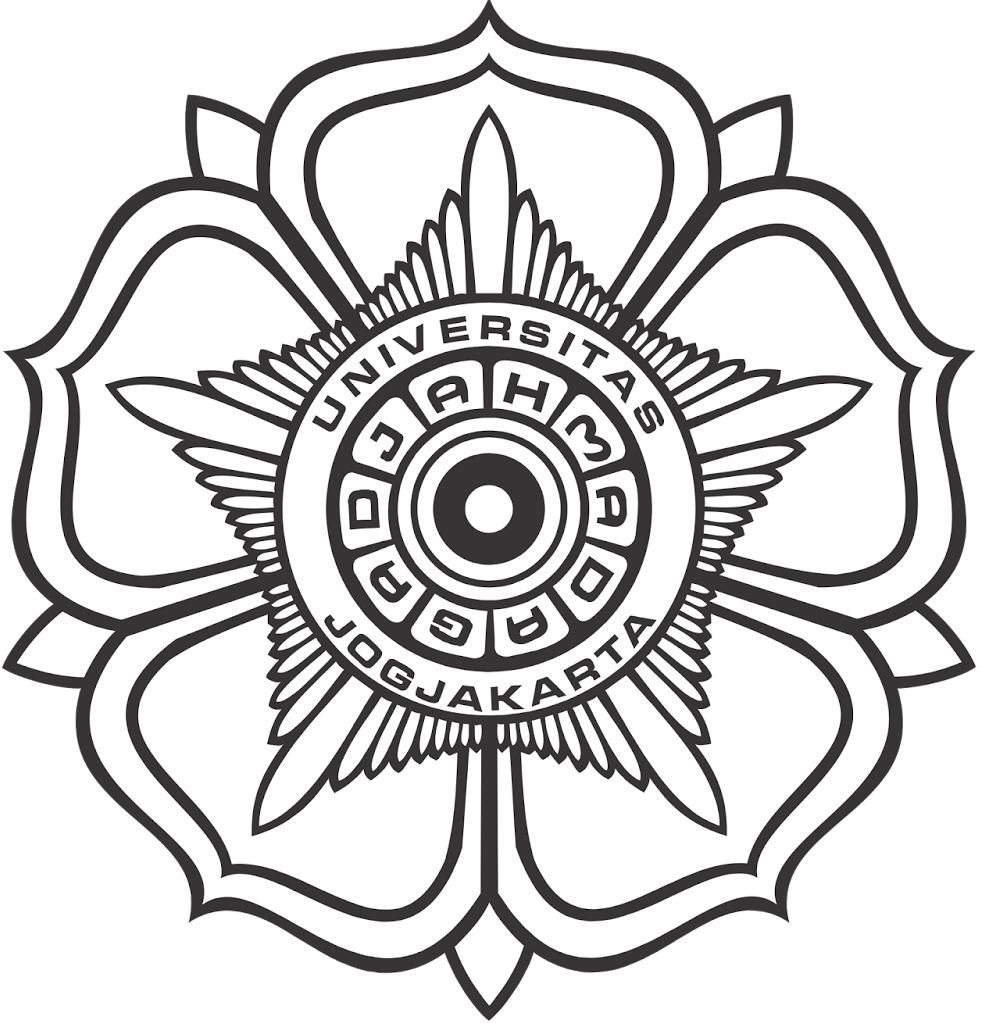SECONDARY BIOACTIVE METABOLITE GENE CLUSTERS IDENTIFICATION OF ANTICANDIDA-PRODUCING Streptomyces Sp. GMR22 ISOLATED FROM WANAGAMA FOREST AS REVEALED BY GENOME MINING APPROACH
Abstract
Keywords
Full Text:
PDF (26-33)References
Alimuddin, A.W., Widada, J. and Mustofa, N.R., 2010. An actinomycetes producing anticandida isolated from cajuput rhizosphere: partial identification of isolates and amplification of PKS-I genes. Indonesian J Biotechnol, 15, pp.1-8.
Bentley, S.D., Chater, K.F., Cerdeno-Tarraga, A.M., Challis, G.L., Thomson, N.R., James, K.D., Harris, D.E., Quail, M.A., Kieser, H., Harper, D. and Bateman, A., 2002. Complete genome sequence of the model actinomycete Streptomyces coelicolor A3 (2). Nature, 417(6885), pp.141-147.
Blin, K., Medema, M.H., Kazempour, D., Fischbach, M.A., Breitling, R., Takano, E. and Weber, T., 2013. antiSMASH 2.0—a versatile platform for genome mining of secondary metabolite producers. Nucleic acids research, p.gkt449.
Distler, J., Mansouri, K., Mayer, G., Stockmann, M. and Piepersberg, W., 1992. Streptomycin biosynthesis and its regulation in Streptomycetes. Gene, 115(1), pp.105-111
Doroghazi, J.R., Albright, J.C., Goering, A.W., Ju, K.S., Haines, R.R., Tchalukov, K.A., Labeda, D.P., Kelleher, N.L. and Metcalf, W.W., 2014. A roadmap for natural product discovery based on large-scale genomics and metabolomics. Nature chemical biology, 10(11), pp.963-968.
Euverink, G.J.W., 1995. Aromatic amino acid biosynthesis in actinomycetes. Groningen: University of Groningen.
El Hassan, A.M., Fahal, A.H., Ahmed, A.O., Ismail, A. and Veress, B., 2001. The immunopathology of actinomycetoma lesions caused by Streptomyces somaliensis. Transactions of the Royal Society of Tropical Medicine and Hygiene, 95(1), pp.89-92.
Katsuyama, Y. and Ohnishi, Y., 2012. Type III polyketide synthases in microorganisms. Methods Enzymol, 515, pp.359-377.
Li, M.H., Ung, P.M., Zajkowski, J., Garneau-Tsodikova, S. and Sherman, D.H., 2009. Automated genome mining for natural products. BMC bioinformatics, 10(1), p.1.
Medema, M.H., Blin, K., Cimermancic, P., de Jager, V., Zakrzewski, P., Fischbach, M.A., Weber, T., Takano, E. and Breitling, R., 2011. antiSMASH: rapid identification, annotation and analysis Galley Proof
of secondary metabolite biosynthesis gene clusters in bacterial and fungal genome sequences. Nucleic acids research, 39(suppl 2), pp.W339-W346.
Newman, D.J., Cragg, G.M. and Snader, K.M., 2000. The influence of natural products upon drug discovery. Natural product reports, 17(3), pp.215-234.
Nurjasmi, R., Widada, J. and Ngadiman, N., 2015. Diversity of Actinomycetes at Several Forest Types in Wanagama I Yogyakarta and Their Potency as a Producer of Antifungal Compound. Indonesian Journal of Biotechnology, 14(2).
Ōmura, S., Ikeda, H., Ishikawa, J., Hanamoto, A., Takahashi, C., Shinose, M., Takahashi, Y., Horikawa, H., Nakazawa, H., Osonoe, T. and Kikuchi, H., 2001. Genome sequence of an industrial microorganism Streptomyces avermitilis: deducing the ability of producing secondary metabolites. Proceedings of the National Academy of Sciences, 98(21), pp.12215-12220.
Quintana, E.T., Wierzbicka, K., Mackiewicz, P., Osman, A., Fahal, A.H., Hamid, M.E., Zakrzewska-Czerwinska, J., Maldonado, L.A. and Goodfellow, M., 2008. Streptomyces sudanensis sp. nov., a new pathogen isolated from patients with actinomycetoma. Antonie Van Leeuwenhoek, 93(3), pp.305-313.
Salis, O., Bedir, A., Kilinc, V., Alacam, H., Gulten, S. and Okuyucu, A., 2014. The anticancer effects of desferrioxamine on human breast adenocarcinoma and hepatocellular carcinoma cells. Cancer Biomarkers, 14(6), pp.419-426.
Shen, B., 2003. Polyketide biosynthesis beyond the type I, II and III polyketide synthase paradigms. Current opinion in chemical biology, 7(2), pp.285-295.
Tamura, K., Stecher, G., Peterson, D., Filipski, A. and Kumar, S., 2013. MEGA6: molecular evolutionary genetics analysis version 6.0. Molecular biology and evolution, 30(12), pp.2725-2729.
Waksman, S.A. and Woodruff, H.B., 1940. Bacteriostatic and Bactericidal Substances Produced by a Soil Actinomyces. Experimental Biology and Medicine, 45(2), pp.609-614.
Weber, T., Blin, K., Duddela, S., Krug, D., Kim, H.U., Bruccoleri, R., Lee, S.Y., Fischbach, M.A., Müller, R., Wohlleben, W. and Breitling, R., 2015. antiSMASH 3.0—a comprehensive resource for the genome mining of biosynthetic gene clusters. Nucleic acids research, 43(W1), pp.W237-W243.
Xu, Z. and Hao, B., 2009. CVTree update: a newly designed phylogenetic study platform using composition vectors and whole genomes. Nucleic acids research, 37(suppl 2), pp.W174-W178.
Ōmura, S., Ikeda, H., Ishikawa, J., Hanamoto, A., Takahashi, C., Shinose, M., Takahashi, Y., Horikawa, H., Nakazawa, H., Osonoe, T. and Kikuchi, H., 2001. Genome sequence of an industrial microorganism Streptomyces avermitilis: deducing the ability of producing secondary metabolites. Proceedings of the National Academy of Sciences, 98(21), pp.12215-12220.
Ohnishi, Y., Ishikawa, J., Hara, H., Suzuki, H., Ikenoya, M., Ikeda, H., Yamashita, A., Hattori, M. and Horinouchi, S., 2008. Genome sequence of the streptomycin-producing microorganism Streptomyces griseus IFO 13350. Journal of bacteriology, 190(11), pp.4050-4060.
Wang, X.J., Yan, Y.J., Zhang, B., An, J., Wang, J.J., Tian, J., Jiang, L., Chen, Y.H., Huang, S.X., Yin, M. and Zhang, J., 2010. Genome sequence of the milbemycin-producing bacterium Streptomyces bingchenggensis. Journal of bacteriology, 192(17), pp.4526-4527.
DOI: http://dx.doi.org/10.14499/indonesianjpharm28iss1pp26
Refbacks
- There are currently no refbacks.
Copyright (c) 2017 INDONESIAN JOURNAL OF PHARMACY

This work is licensed under a Creative Commons Attribution-ShareAlike 4.0 International License.
Indonesian J Pharm indexed by:







































